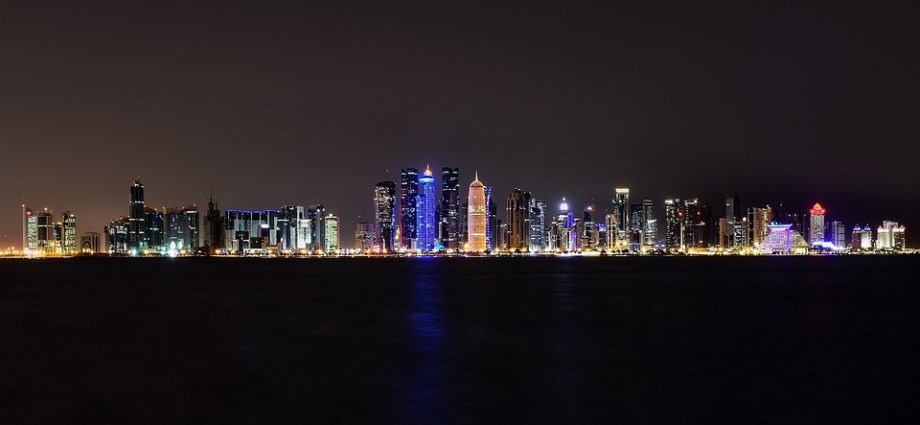Qatar’s Strategic Vision for the Future: A Traveler’s Guide to the Most Vibrant Middle Eastern Destination
The Middle East has always been a hot spot for travelers, thanks to its rich culture, history, and diverse landscapes. Qatar, in particular, is quickly gaining popularity among tourists due to its strategic vision for the future, which promises to make it one of the most advanced and innovative countries in the world. This travel guide will provide you with all the relevant details about Qatar’s strategic vision for the future, its top tourist attractions, and FAQs.
1. Qatar’s Vision 2030
In 2008, Qatar launched its long-term strategic plan, Vision 2030, which aims to develop a knowledge-based economy, foster social development, and establish the country as a global leader in various fields. The plan is based on four pillars: economic development, social development, human development, and environmental development. Qatar’s vision and plans showcase its ambitions and commitment to achieving a sustainable and flourishing future. The country’s vision includes a carefully crafted plan to boost tourism, with the aim of attracting new audiences by offering world-class amenities and unforgettable experiences.
2. Investments in Infrastructure and Planning
To realize Qatar’s vision, the country has invested billions of dollars in infrastructure and planning, including the construction of new airports, hotels, and public transport systems. Qatar’s capital city, Doha, will host the 2022 FIFA World Cup, which has driven significant investments in the country’s infrastructure, facilities, and digital development. The country’s growth revolves around creating a smart city, increasing tourism, and boosting the economy.
3. Cultural Diversity
Qatar’s vision also reflects its commitment to preserving and celebrating its rich cultural heritage while also embracing modernization. The government has implemented policies aimed at promoting awareness and respect for the country’s traditions while also fostering more diverse cultural exchange. Tourists can experience Qatari culture in various forms, like taking part in traditional dancing, visiting mosques, and enjoying Arabic cuisine. Additionally, Qatar’s art scene is thriving, with galleries and museums showcasing both local and international art.
4. Economic Development
While Qatar is known for its oil and gas resources, the country is increasingly diversifying its economy by investing in technology and innovation. The Qatar Science & Technology Park provides financial incentives and support to tech startups to achieve breakthroughs in research and development. In line with this, the Qatar Financial Centre offers top-of-the-line facilities and services for banks, insurance firms, and financial institutions.
5. FAQS
Q: What is the best time of year to visit Qatar?
A: November to March is a great time to visit as the temperatures are relatively mild.
Q: Is Qatar safe for tourists?
A: Yes, Qatar is a safe travel destination with low rates of crime.
Q: What is Qatar’s main cuisine?
A: Qatari cuisine is a mix of Middle Eastern and Asian dishes, with roasted lamb and rice being one of the staples.
Q: Do I need a visa to visit Qatar?
A: Yes, travelers from certain countries must obtain a visa before arriving in Qatar, while others can receive a visa upon their arrival.
6. Top 10 Tourist Attractions
Qatar is home to various tourist attractions, ranging from futuristic skyscrapers to awe-inspiring mosques. Here are the top 10 tourist attractions:
1. Sheikh Faisal Museum: A private museum showcasing over 15,000 objects belonging to the royal family, including antique cars, Islamic art, and fossils.
2. Museum of Islamic Art: Displays Islamic art and artifacts from three continents and over 1,400 years of history.
3. Souq Waqif: A vibrant marketplace selling traditional garments, jewelry, spices, and handicrafts.
4. Katara Cultural Village: A cultural hub featuring performance venues, galleries, restaurants, and a beach.
5. The Pearl-Qatar: A man-made island offering high-end shopping, luxurious hotels, and residential options.
6. Aspire Park: A sprawling park with a man-made lake, playgrounds, and walking paths.
7. Al Zubara Fort: A UNESCO World Heritage site, showcasing a traditional Qatari fort.
8. Doha Corniche: A 7-kilometer-long waterfront promenade that offers stunning views of Doha’s skyline.
9. Katara Beach: A family-friendly beach destination, with numerous restaurants, theaters, and art installations.
10. Barzan Towers: A 19th-century watchtower showcasing Islamic architecture and history.
In conclusion, Qatar’s strategic vision for the future promises a bright and successful future for the country. The government’s focus on developing infrastructure, fostering cultural diversity, and investing in technology has made the country an exciting and innovative destination for travelers. Whether you’re interested in ancient history, modern architecture, or cultural experiences, Qatar offers something for everyone.
